brain
Latest

Sensor-embedded plastic wrap makes brain surgery safer
It almost goes without saying that brain surgery requires extreme precision, but there hasn't been much advancement in brain mapping techniques for the past two decades. What good is a breakthrough procedure if you're still using bulky, imprecise 1990s-era technology as a guide? Researchers may have a better way: they've developed an electrode grid-based brain mapping tool that's both much easier to wield and far more precise. Instead of relying on the usual metal electrodes, they switched to a conductive polymer that's so tiny and thin it makes Saran Wrap look ungainly. That, in turn, let them stuff 25 times more electrodes into the same space while slimming their tool down to just 0.0002 inches thick instead of a few tenths of an inch.
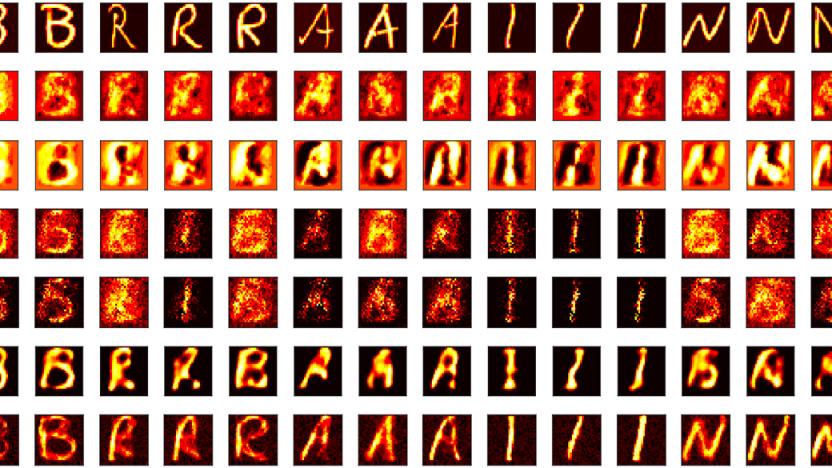
Neural network learns to reproduce what your brain sees
Scientists dream of recreating mental images through brain scans, but current techniques produce results that are... fuzzy, to put it mildly. A trio of Chinese researchers might just solve that. They've developed neural network algorithms that do a much better job of reproducing images taken from functional MRI scans. The team trains its network to recreate images by feeding it the visual cortex scans of someone looking at a picture and asking the network to recreate the original image based on that data. After enough practice, it's off to the races -- the system knows how to correlate voxels (3D pixels) in scans so that it can generate accurate, noise-free images without having to see the original.
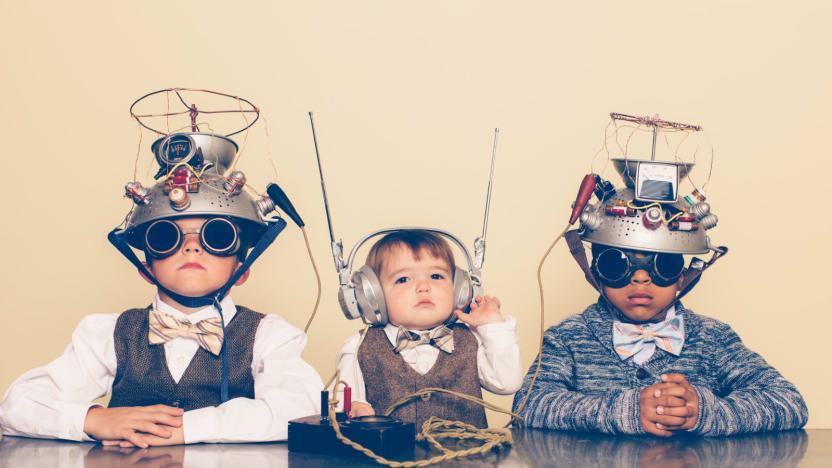
Elon Musk expects to have a brain-machine interface in four years
A couple of weeks ago, the Wall Street Journal revealed Elon Musk's latest venture, Neuralink, and its plan for developing brain-machine interface technology. Now, Musk has invited Tim Urban of Wait But Why to write up an in-depth report of the company and what it's working on. Neuralink is hardly the only company working on things that will plug into our brains, and earlier this week we got a peek at what Facebook is working on in the area. One new thing we know from this report, however, is that Musk and his team seem pretty close to making it happen -- the SpaceX and Tesla founder figures they can have something on the market to treat severe brain injuries "in about four years."
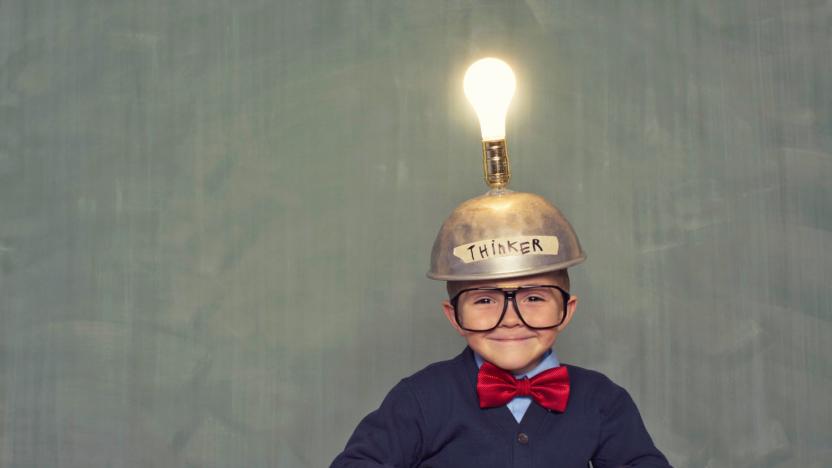
Mice brains store backup copies of memories
Turns out that even the human brain might use redundancy when it comes to storage. New research out of the Riken-MIT Center for Neural Circuit Genetics suggests that memories are stored in two places in the brain: the hippocampus for short-term and the cortex for longterm. Previously, the prevailing theory was that once a memory was formed in the hippocampus, it would then move to the cortex for storage. But that may not be the case, according to a paper published in Science.

Facebook may show off its hardware efforts in April
When Facebook launched its hardware-focused Building 8, it raised all kinds of questions: just what was it making in there, and when would you see the first fruits of its labor? You might not have to wait long to get the details. Sources speaking to Business Insider claim to have a broad overview of not only what Building 8 is creating, but when you might get to see it. The team is reportedly working on four advanced technology projects, and is poised to play a key role in Facebook's F8 conference in April. In other words, some of its secretive work would be revealed in a matter of weeks.

AI can predict autism through babies' brain scans
Scientists know that the first signs of autism can appear in early childhood, but reliably predicting that at very young ages is difficult. A behavior questionnaire is a crapshoot at 12 months. However, artificial intelligence might just be the key to making an accurate call. University of North Carolina researchers have developed a deep learning algorithm that can predict autism in babies with a relatively high 81 percent accuracy and 88 percent sensitivity. The team trained the algorithm to recognize early hints of autism by feeding it brain scans and asking it to watch for three common factors: the brain's surface area, its volume and the child's gender (as boys are more likely to have autism). In tests, the AI could spot the telltale increase in surface area as early as 6 months, and a matching increase in volume as soon as 12 months -- it wasn't a surprise that most of these babies were formally diagnosed with autism at 2 years old.
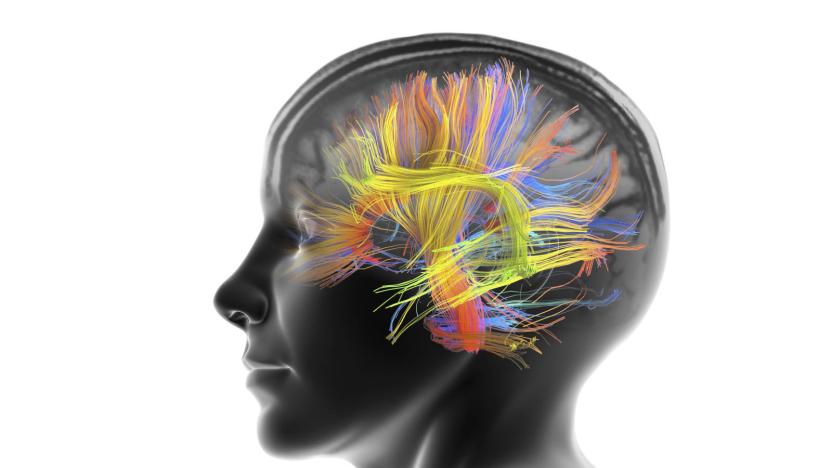
Your brain always has a backup plan
You may not always be consciously considering a Plan B when you're making a decision, but that doesn't mean it doesn't exist. Queen's University researchers have discovered that the human brain's motor neurons will prepare for multiple actions before making a decision. The team learned this by conducting experiments where volunteers were asked to guide a cursor toward one of two targets before they knew which one they were supposed to pick. While it was easy for the test subjects to consciously steer down the middle, the scientists took the cursor increasingly out of sync to make people compensate through unconscious actions. Sure enough, the volunteers' movements were an average of the movement paths needed to reach the targets, not the average between the positions -- their brains were already prepping for both paths.
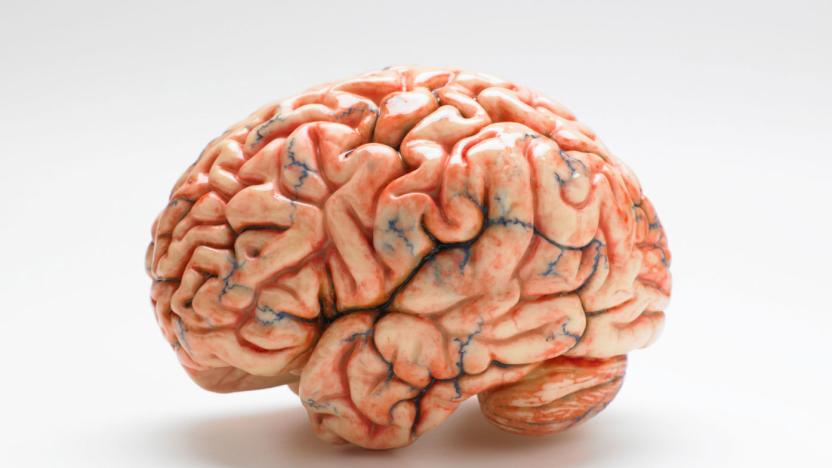
Researchers discover blood vessels in lab-grown mini-brains
Growing brains in laboratories was just the start for scientists. Next up is vasculature. By studying the naturally occurring capillaries discovered on the mini-brains, researchers from Brown University say that they will be able to conduct bigger investigations into things like strokes and concussions.
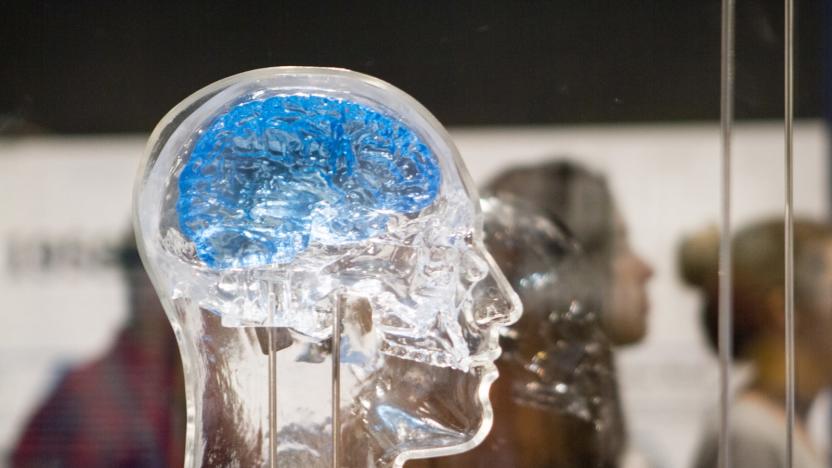
Brain mapping could lead to better Parkinson's treatments
When you repair electronics, you frequently test individual parts to see how they affect the whole. Why not try that with the brain? Stanford is doing just that. It developed a technique that fires specific kinds of neurons to map the brain and identify problems caused by Parkinson's and other diseases. The approach first uses optogenetics to make neurons activate in response to light, and follows up with a functional MRI scan to look for the increased blood flow that indicates activity in other brain regions. A computational analysis maps that particular neural circuit and helps determine its role.

Super-fast camera records light-based 'sonic booms'
Scientists have suspected that light can create its own conical wakes, like a sonic boom, but how do you capture something that happens so quickly? With a very fast camera, naturally. Washington University in St. Louis has recorded these photonic shockwaves using a "streak camera" that measures both the image and temporal data at 100 billion frames per second. To visualize the cones, the team shot very fast green laser pulses (just 7 picoseconds long) through a tunnel full of dry fog and placed between plates made from aluminum oxide and silicone rubber. Since the laser moved faster in the tunnel than in the plates, it produced a sonic boom-like effect as some of the light dragged behind.
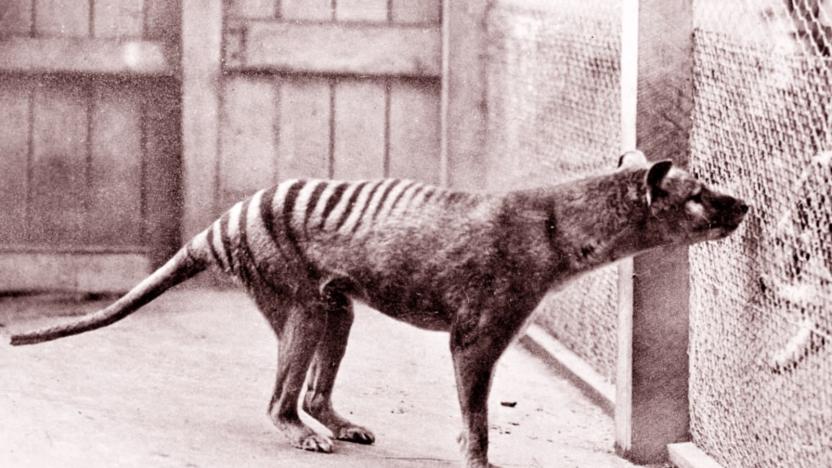
Brain scans shed light on an extinct species
It's not exactly easy to study the Tasmanian tiger. The marsupial has been extinct for over 80 years, and it wasn't given much scientific attention when it was alive -- settlers saw it as a threat to their livestock, not a curiosity. However, that isn't about to stop scientists from learning more about the sadly neglected species. Researchers have scanned two preserved Tasmanian tiger brains and discovered that the creatures were considerably more intelligent than many thought. While their brains were similar to those of Tasmanian devils, their larger frontal lobes suggest they were better at planning and making decisions. That backs the belief that they were hunters, not scavengers like their genetic cousins.

Smart body armor could gauge brain damage from explosions
Explosions are insidious. Even if a blast doesn't deliver a conspicuous injury, it can inflict brain trauma that might not be evident until much later. The US Navy's Office of Naval Research doesn't want medics to wait, though. It's developing Blast Load Assessment Sense and Test (conveniently, BLAST), a sensor system that could determine whether or not an explosion's shockwave is likely to have injured your brain. Tiny sensors in your helmet and body armor would record the blast pressure and share it with a scanner. When combined with a palm-sized neurological assessment tool (which stimulates your fingers to gauge your responses), the data would let medical teams quickly decide whether or not you're able to fight.

Researchers genetically engineer Salmonella to eat brain tumors
Salmonella has earned its bad reputation. It is responsible for more than a million cases of food poisoning every year, of which nearly 400 people die. But a team of researchers from Duke University have recently engineered the bacteria to not attack the human gastrointestinal tract, but rather the most aggressive form of brain cancer known to man.
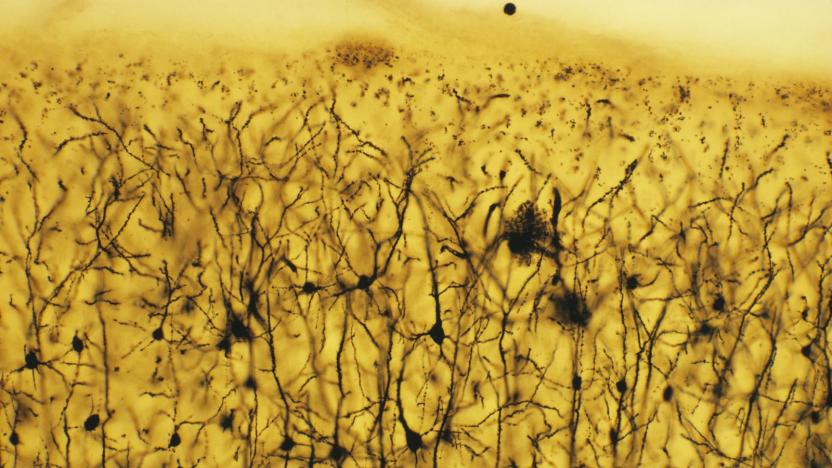
Brain region that recognizes faces keeps growing in adulthood
Neurologists thought that your brain was basically set once you hit early childhood, but researchers from Stanford have discovered one part that keeps growing. Using new MRI imaging techniques, they found that the "fusiform gyrus," which is mostly responsible for recognizing human faces, keeps expanding well after other regions have stopped. The research could lead to more sophisticated cellular analysis of the brain and help patients with a disorder called "facial blindness."

Brains can recover some 'lost' memories
For the longest while, researchers believed that you could only preserve a memory in your brain if the relevant neurons were active. However, it now looks like this isn't always the case -- and that could be a tremendous help to anyone suffering from short-term memory loss. Scientists have discovered that small jolts of electricity to the brain (specifically, a pulse of transcranial magnetic stimulation) can revive recent memories. Your mind can slow near-term memories down to a dormant state where they're in the background, but remain ready to come back when necessary.

Religion and gambling have the same effect on your brain
Finding Jesus can feel a lot like falling in love, winning an award or getting high because all of these events activate the same reward circuits in the brain, according to a new study from the University of Utah. Researchers studied fMRI scans of 19 devout Mormons as they were exposed to prayer, scripture and sermons designed by the LDS Church to evoke spiritual feelings, and found reproducible activation in the nucleus accumbens, a region in the brain associated with reward and pleasure.

Scientists think this is where your consciousness lives
You're reading this right now. Yes, sure, your eyes are converting incoming photons into electrical impulses which travel up the optic nerve into your visual cortex, which in turn processes that information into coherent thought. But you -- the active consciousness that constitutes your personality-- are reading this. And now a team of Harvard scientists think they've figured out how that works.
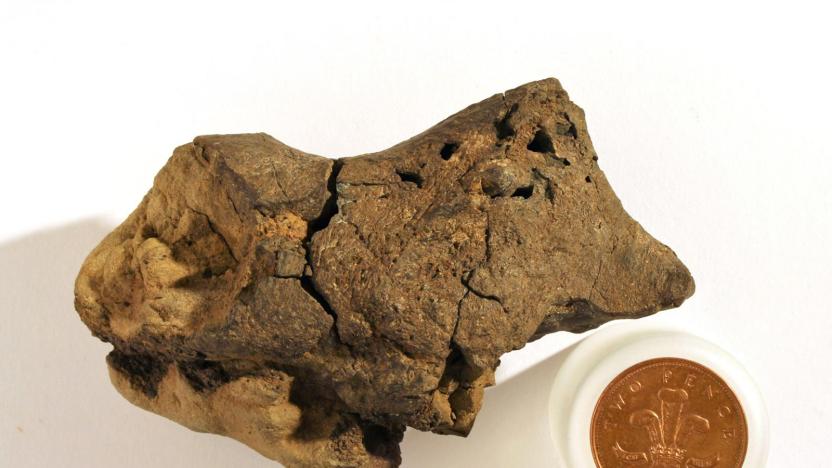
Scientists find the first known dinosaur brain tissue fossil
That lump you see above many not look like much at first blush, but it's a big deal for paleontology: scientists say they have discovered that the sample has the first known example of a dinosaur brain tissue fossil. The team used a scanning electron microscope to detect mineralized blood vessels, collagen, membranes and possibly brain cortex in the remains of an iguanodonid that lived about 133 million years ago. The findings suggest that the dino's brain had a lot in common with those of modern birds and reptiles. Instead of completely filling the cranial cavity, the brain matter significant space for blood vessels and sinuses.

ICYMI: Relax while a robot takes care of your yard work
try{document.getElementById("aol-cms-player-1").style.display="none";}catch(e){}Today on In Case You Missed It: Kobi is a yard work robot that is purportedly able to clean leaves, mow the lawn and shovel snow, though the promo video shows it very briefly moving snow only, so stand by for reviews on that rush purchase. Meanwhile UCSF researchers found that infant brains actually move neurons around up to three months after birth, which is not something we'd known before. The self-driving car experiment out of the University of Oxford wrapped up with a sweet little send-off video. If you're interested in the LED suit from Red Bull, that video is here. As always, please share any interesting tech or science videos you find by using the #ICYMI hashtag on Twitter for @mskerryd.
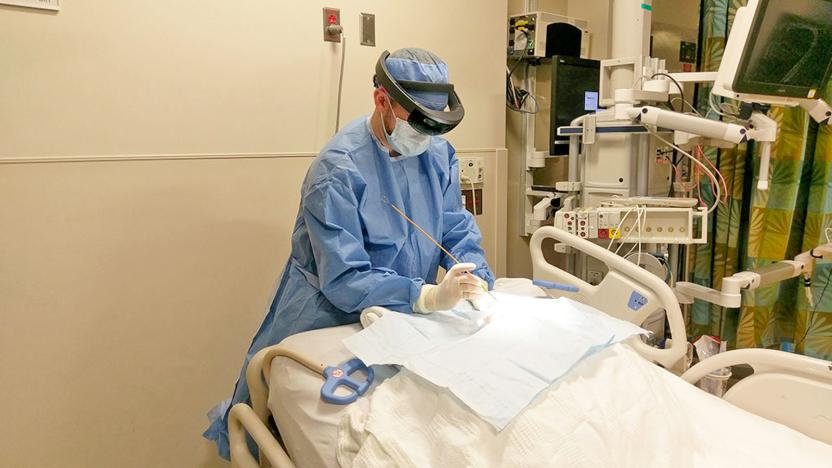
Duke hopes HoloLens will assist with tricky brain surgeries
When Microsoft envisioned the medical world embracing HoloLens in the future, it wasn't kidding around. Duke University is testing the augmented reality headset as an assistive tool for difficult brain surgeries like extraventricular drain placement, which relieves potentially fatal pressure. Instead of relying on CT scans and markers to insert a catheter into the skull during the draining procedure, Duke's doctors would use HoloLens to overlay a reconstructed CT scan on the patient's head. The virtual approach should not only be more accurate than conventional markers (the target is frequently too small or shifts around), but faster and simpler.






